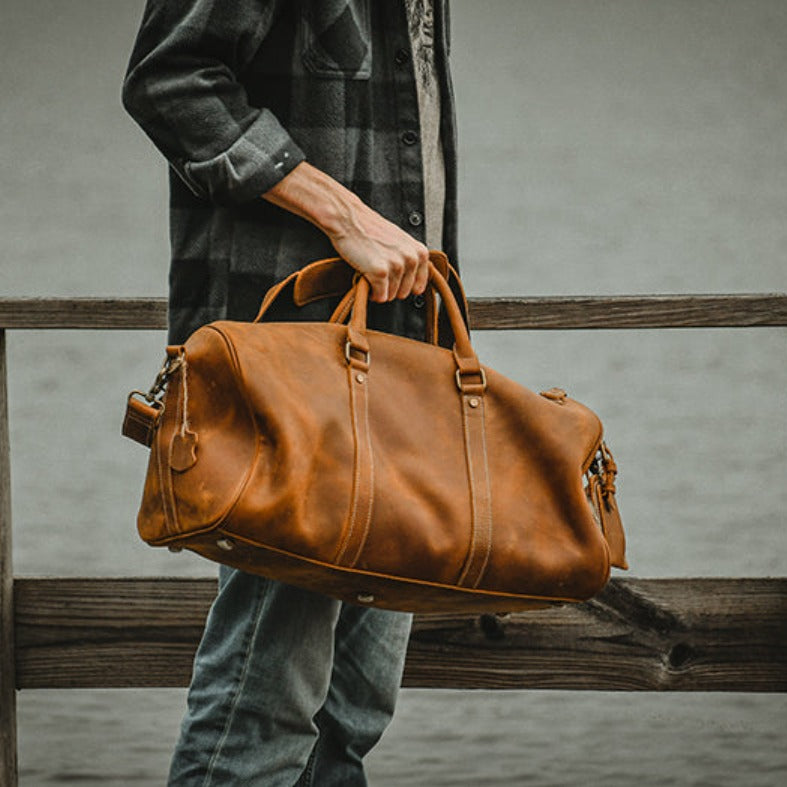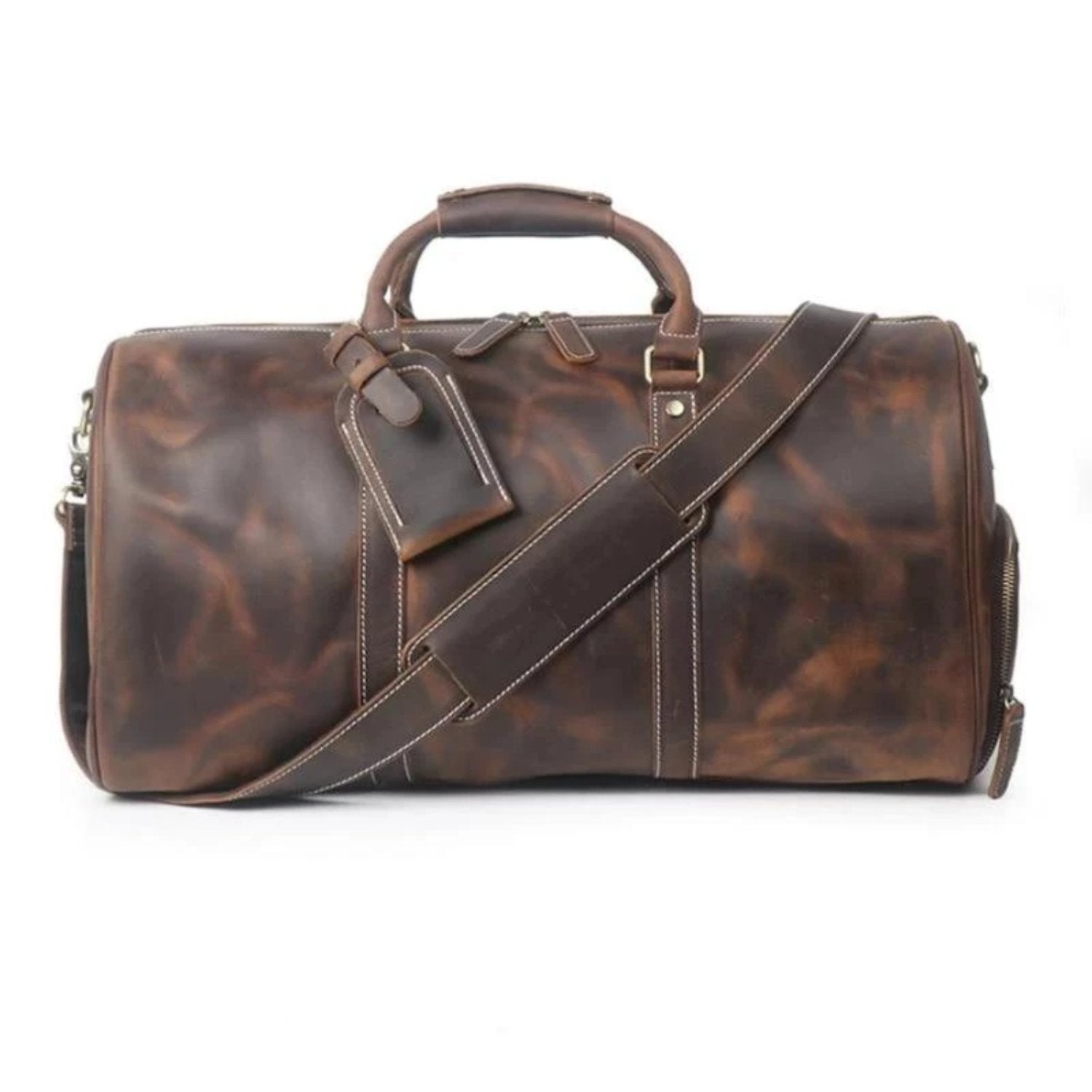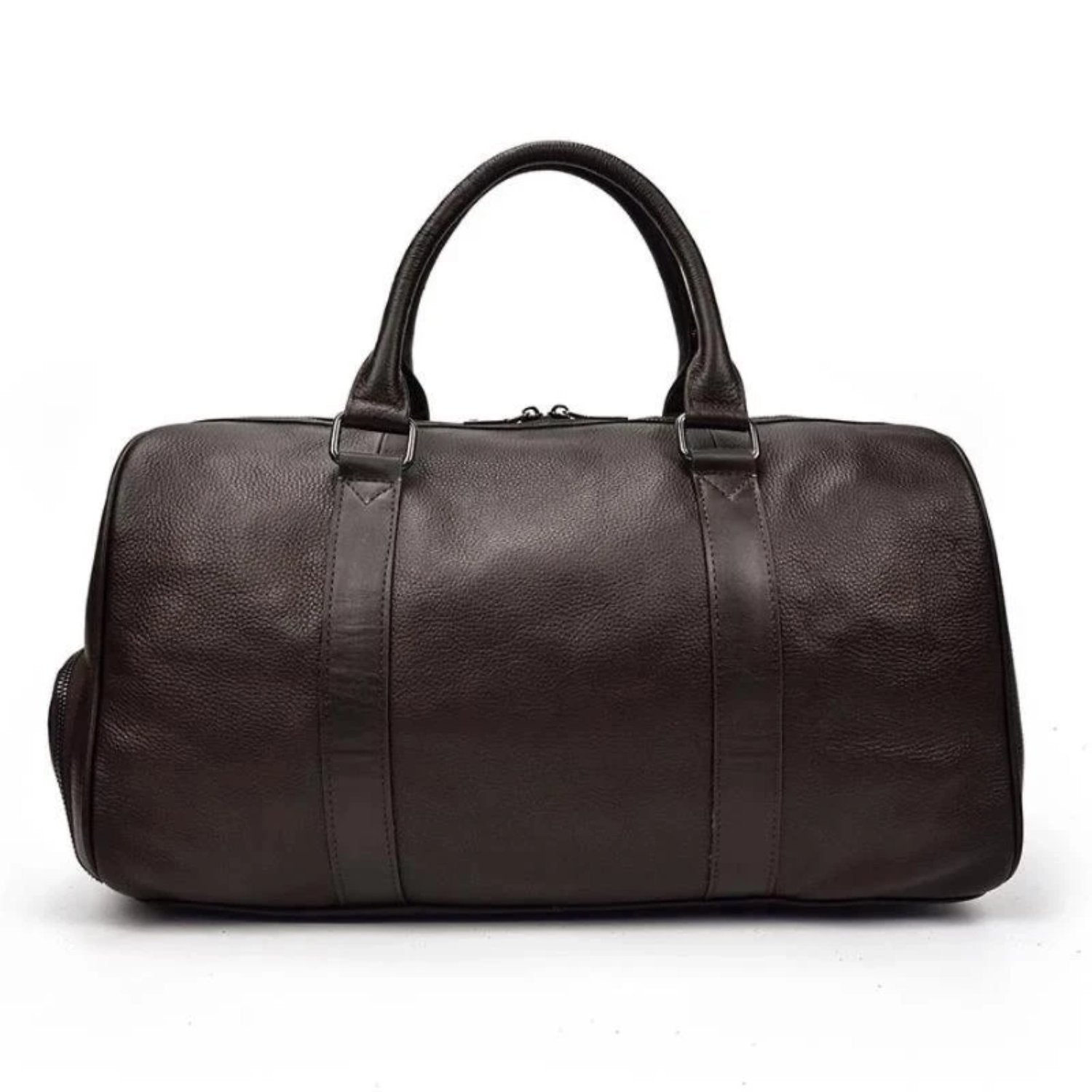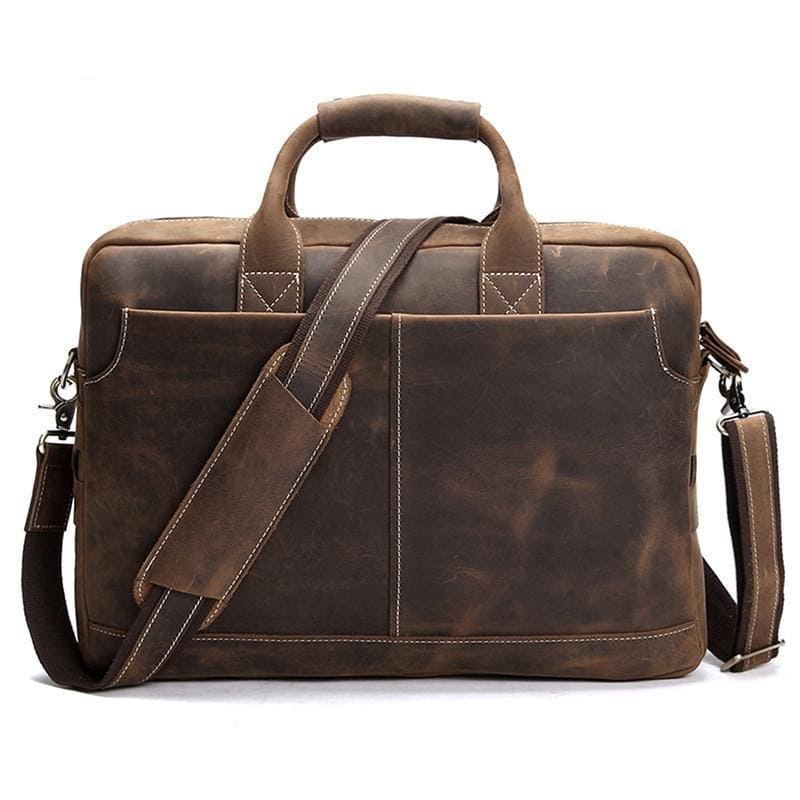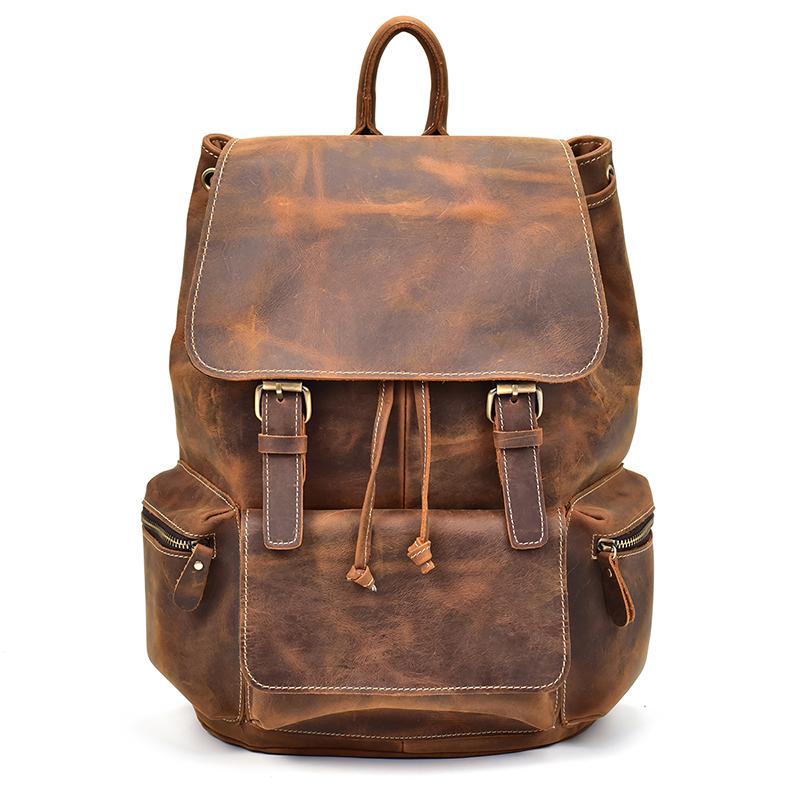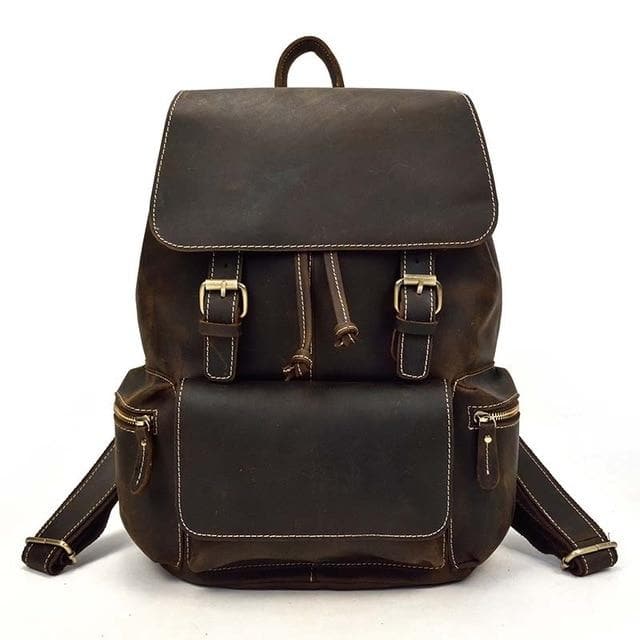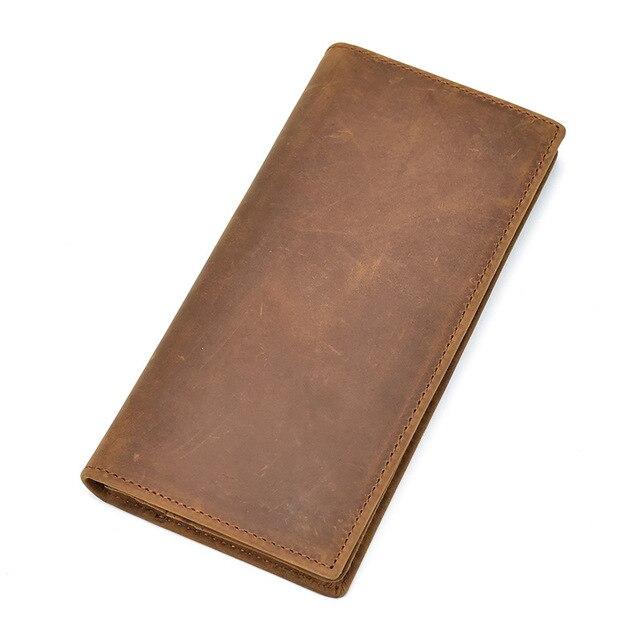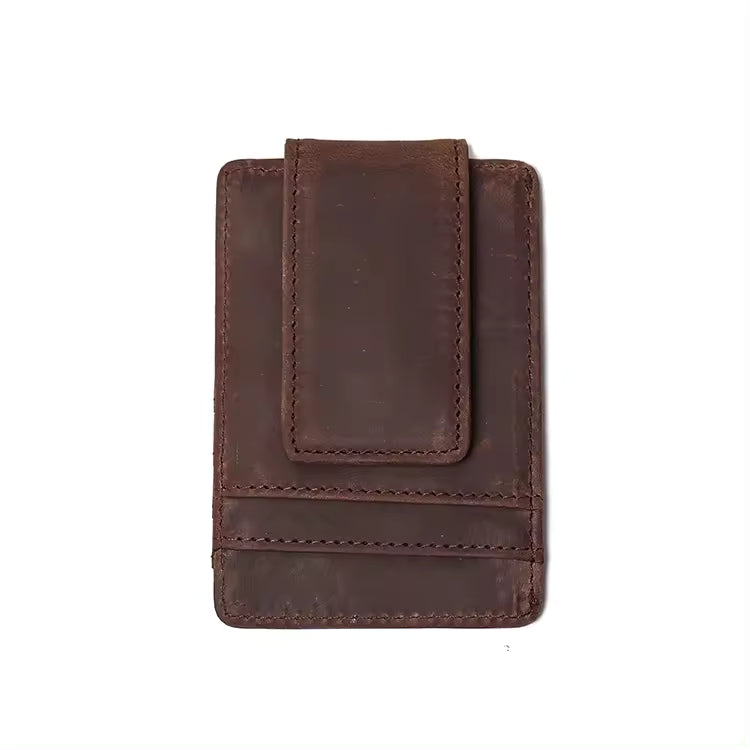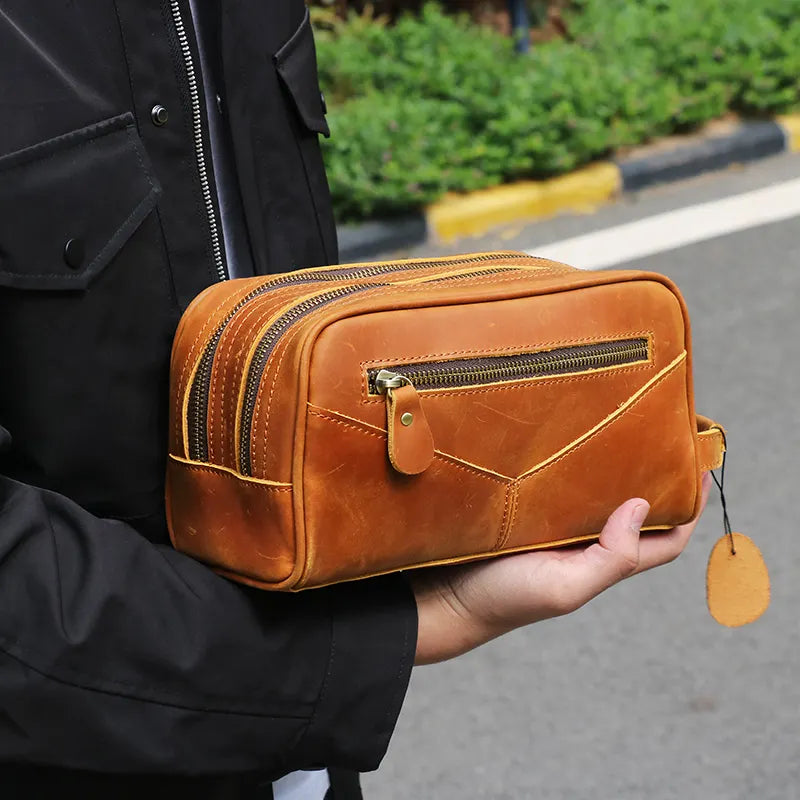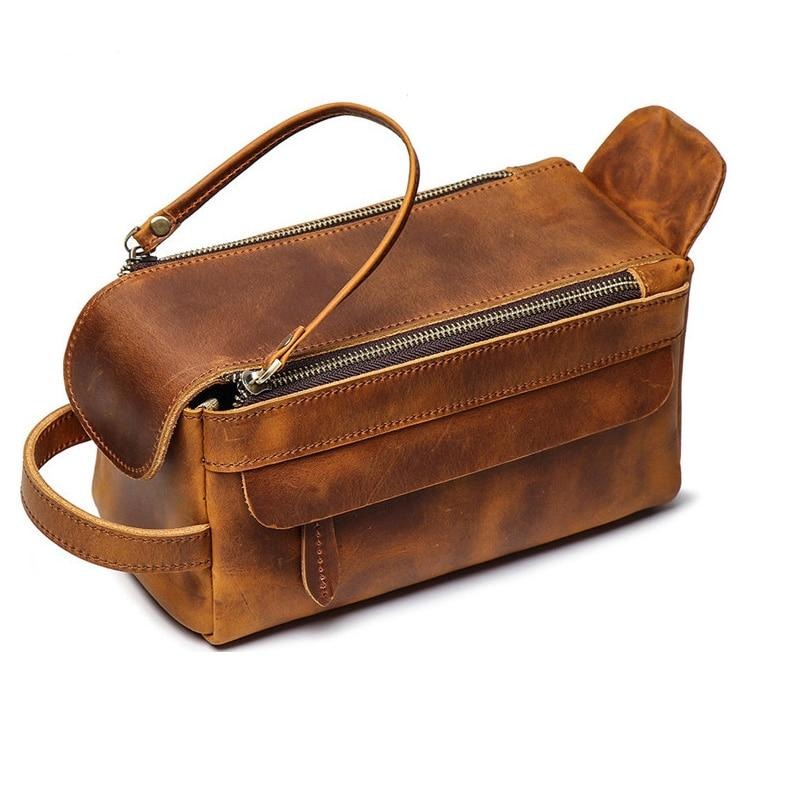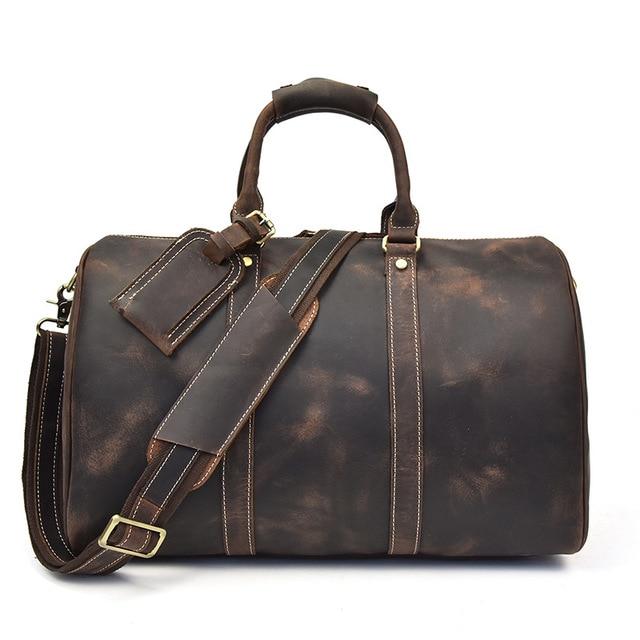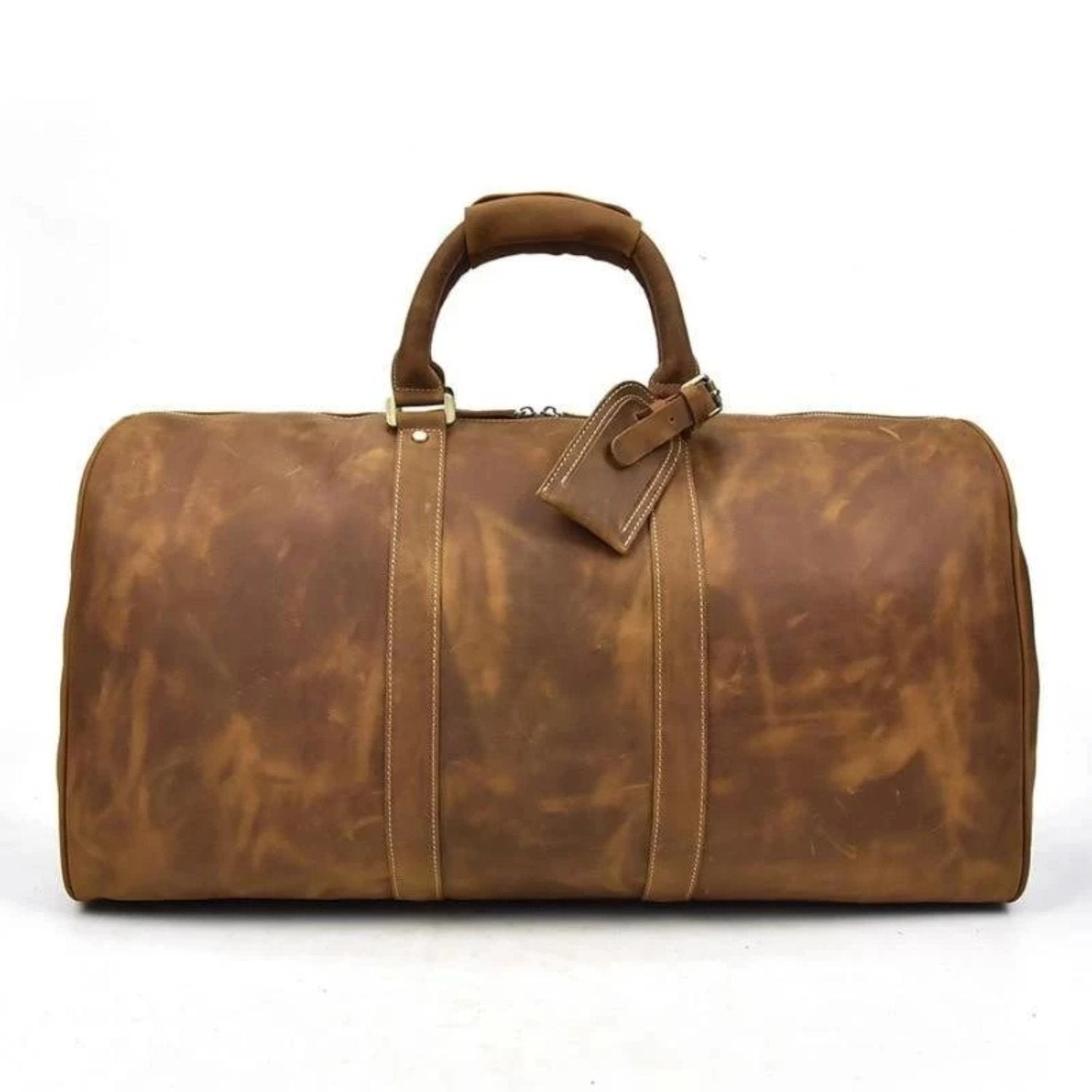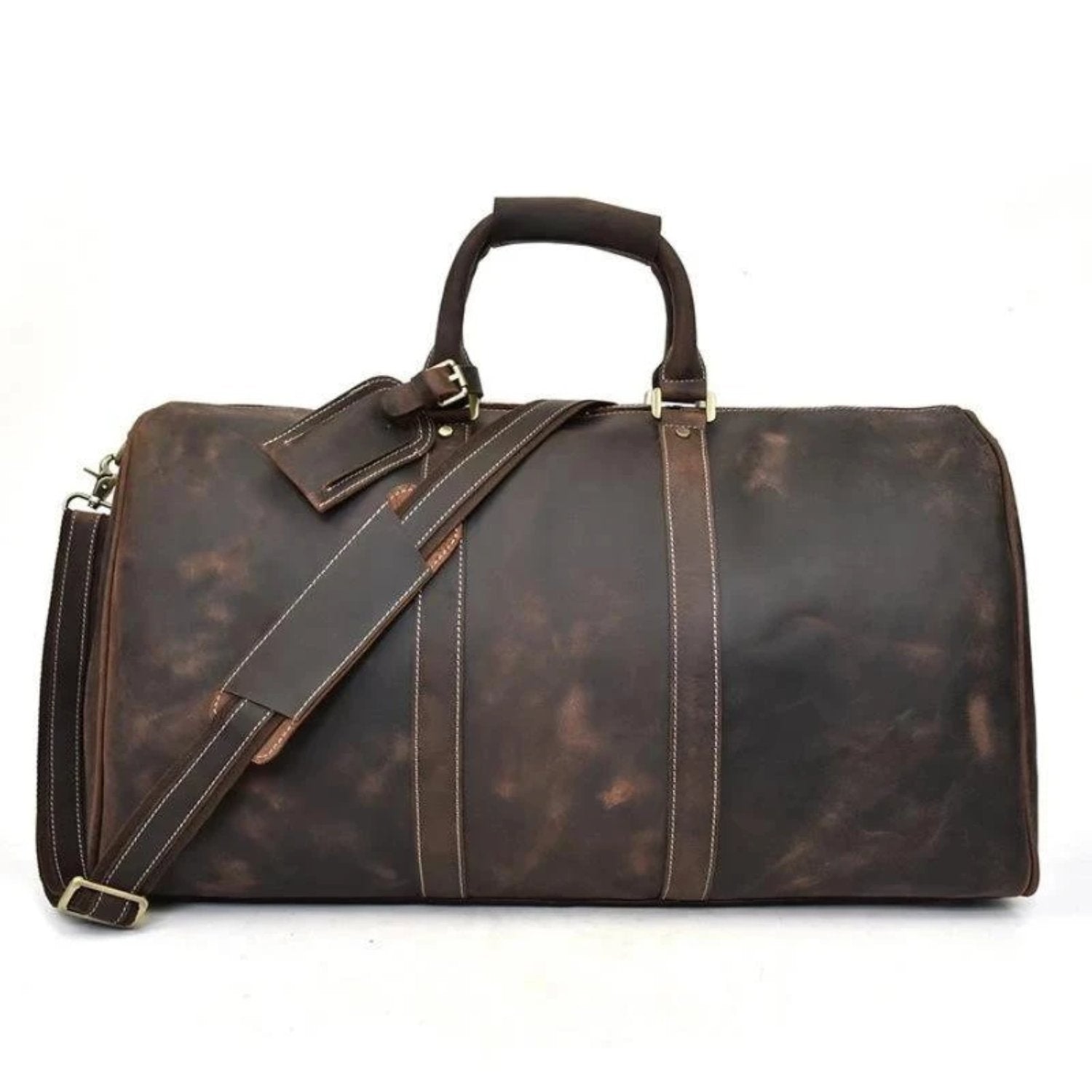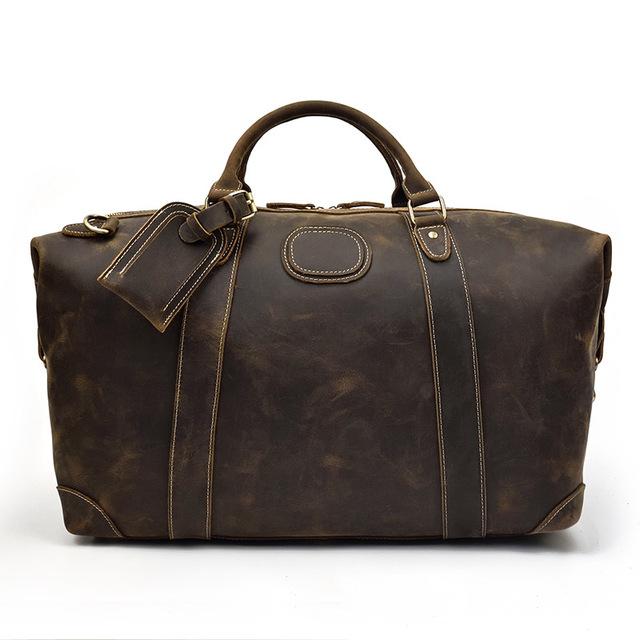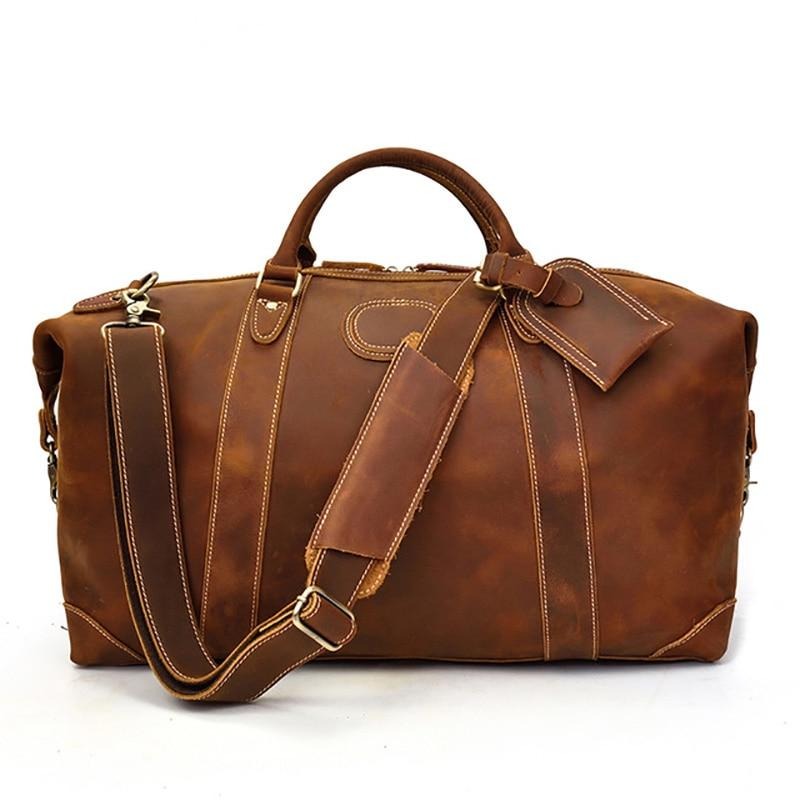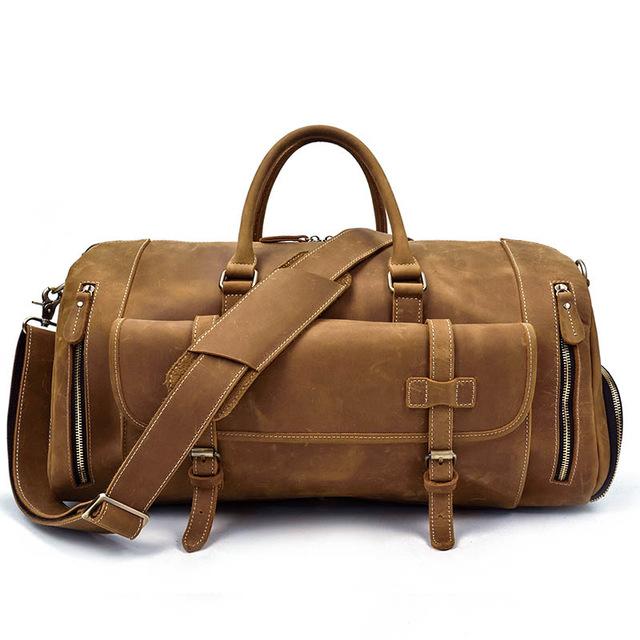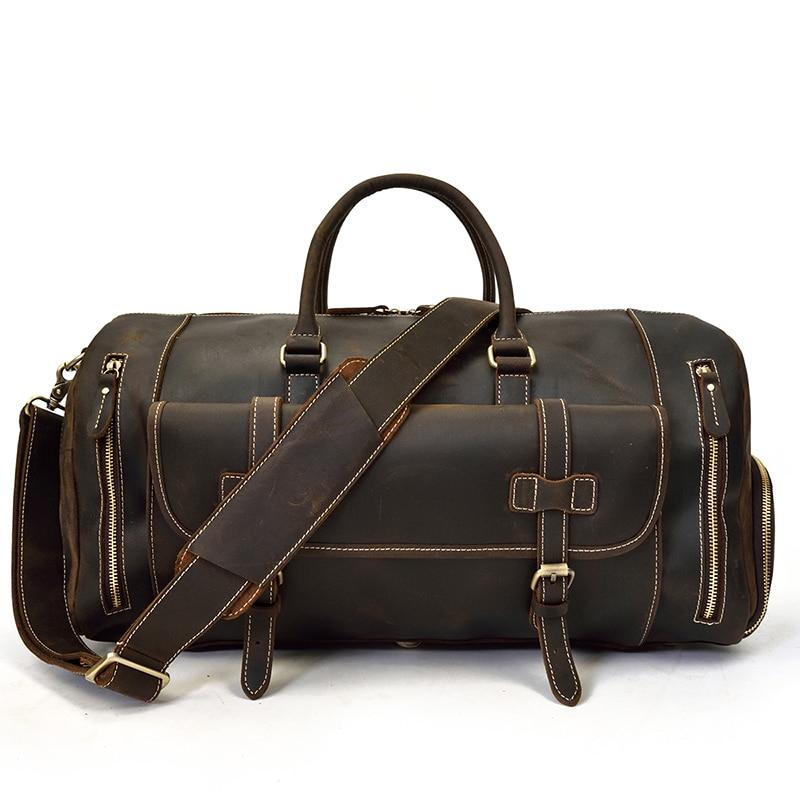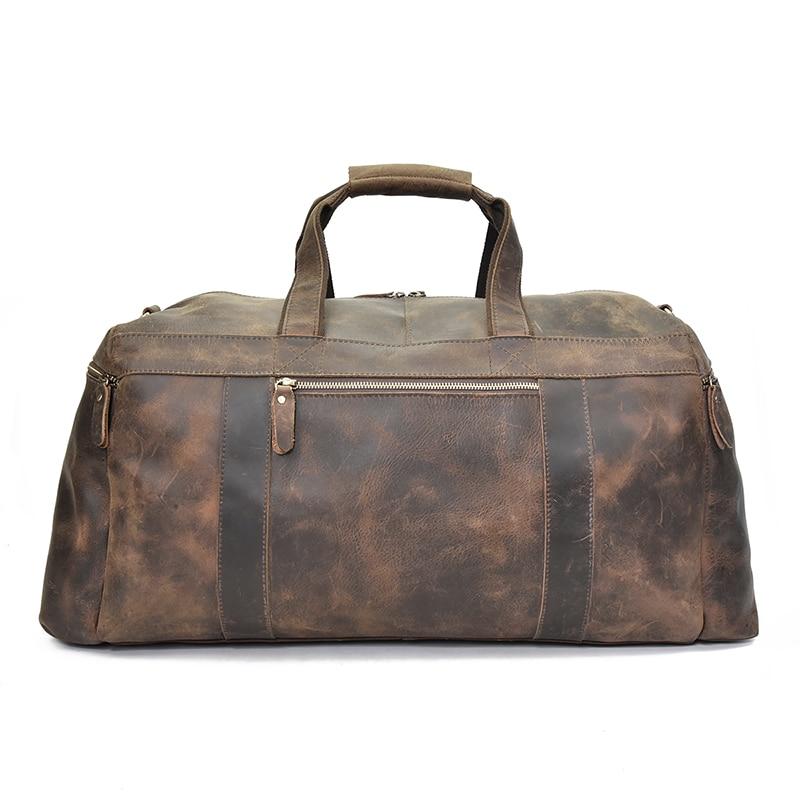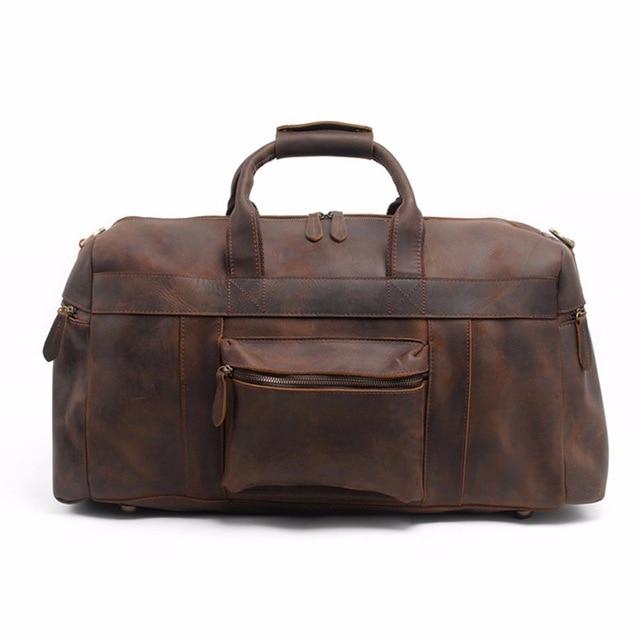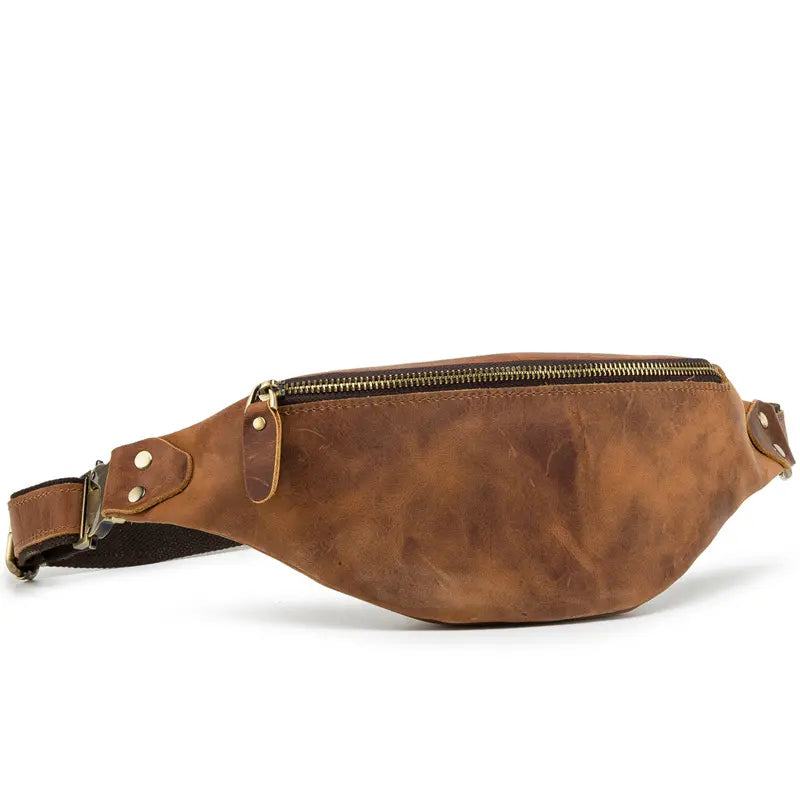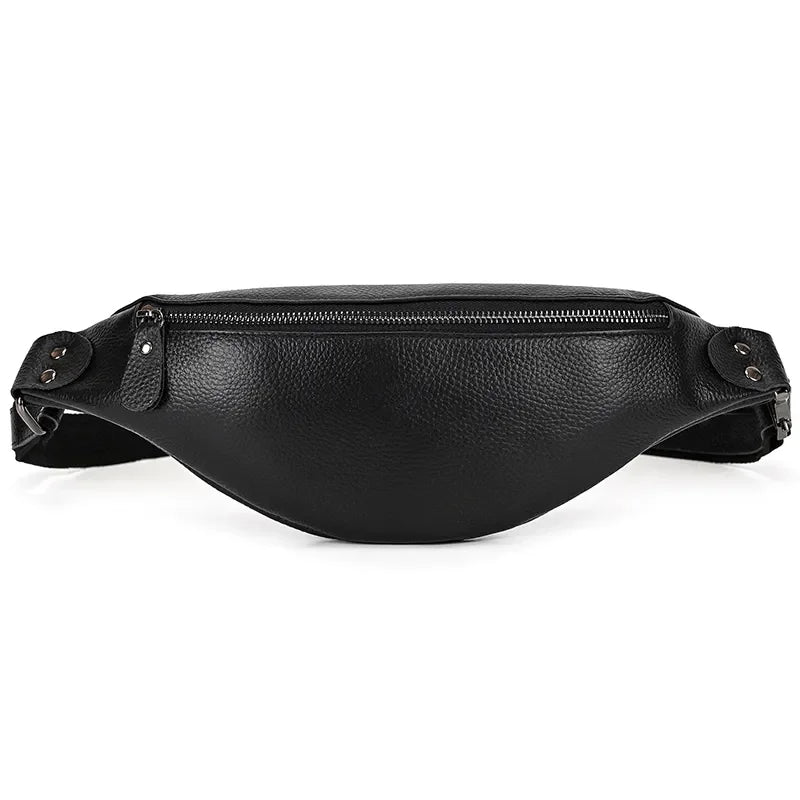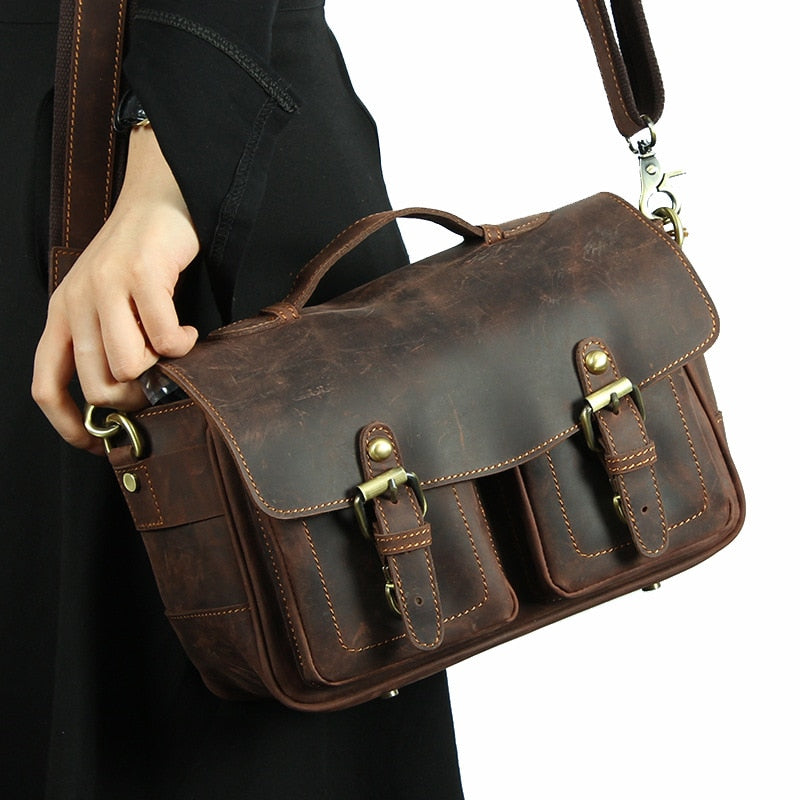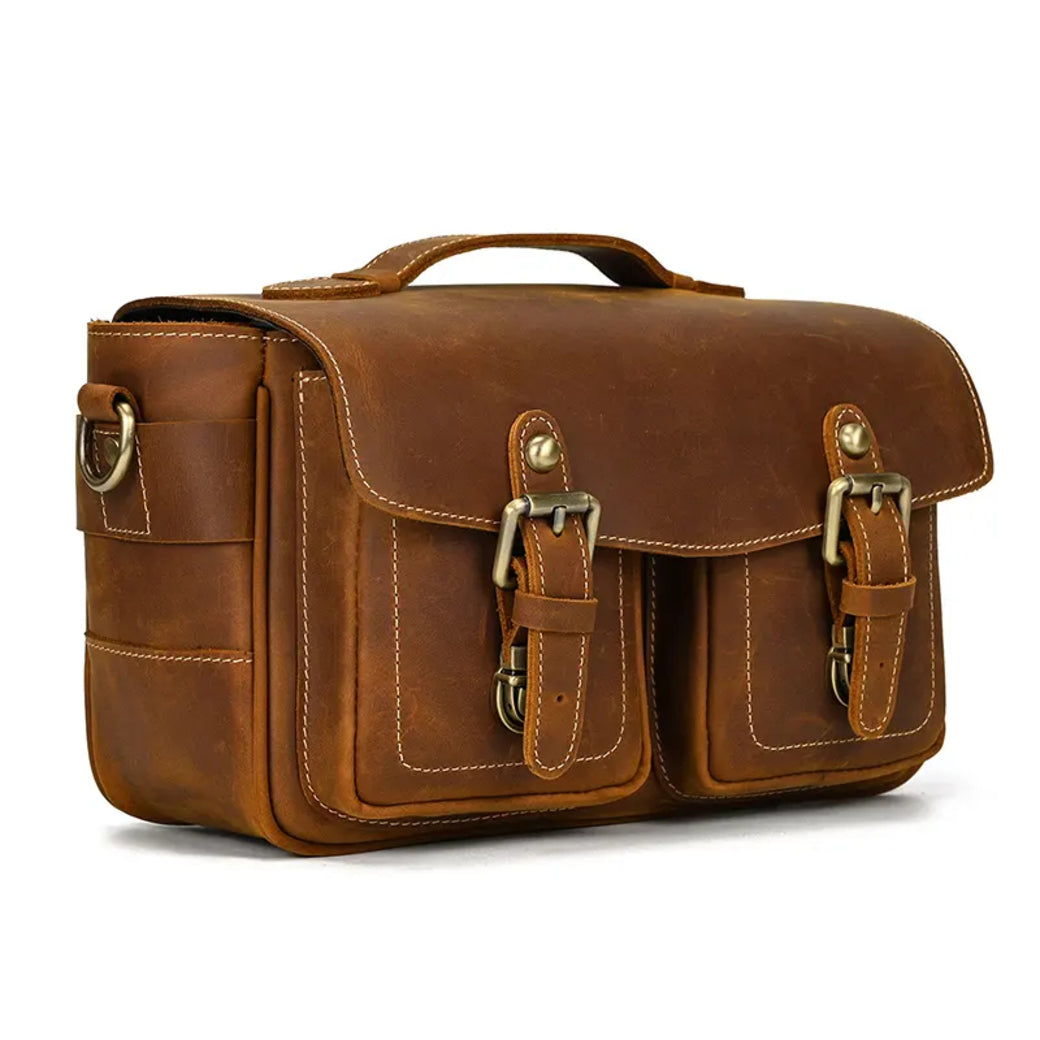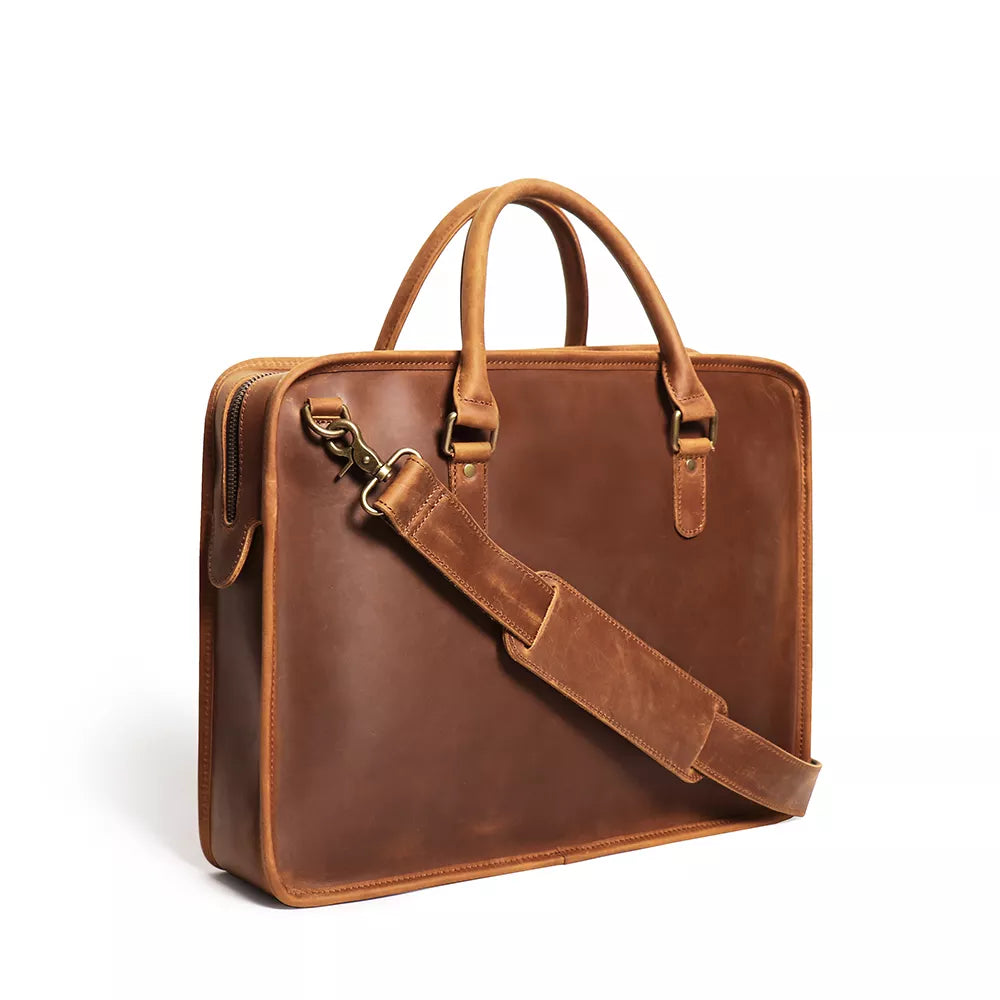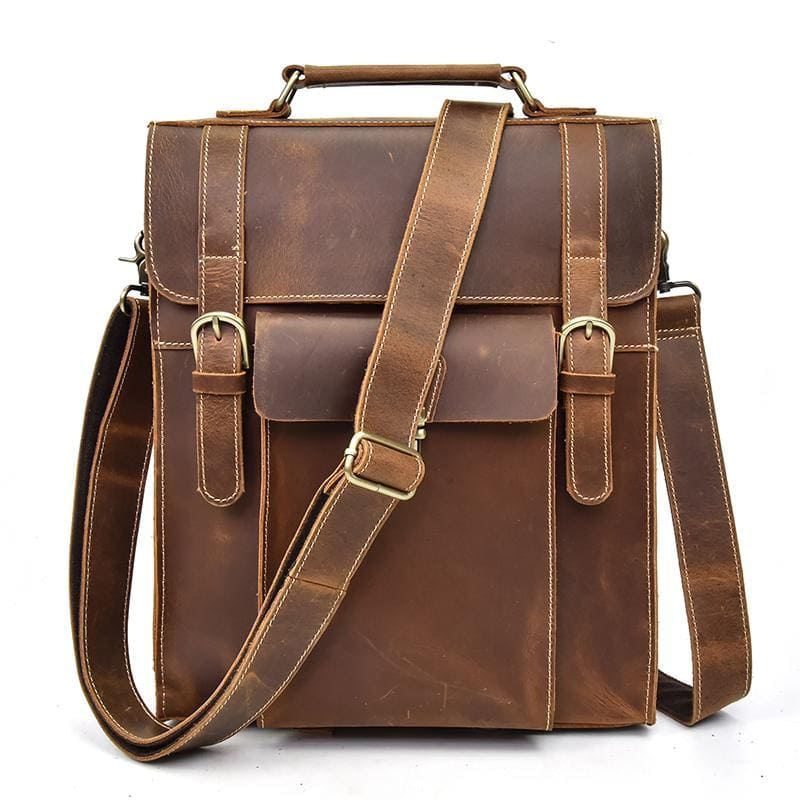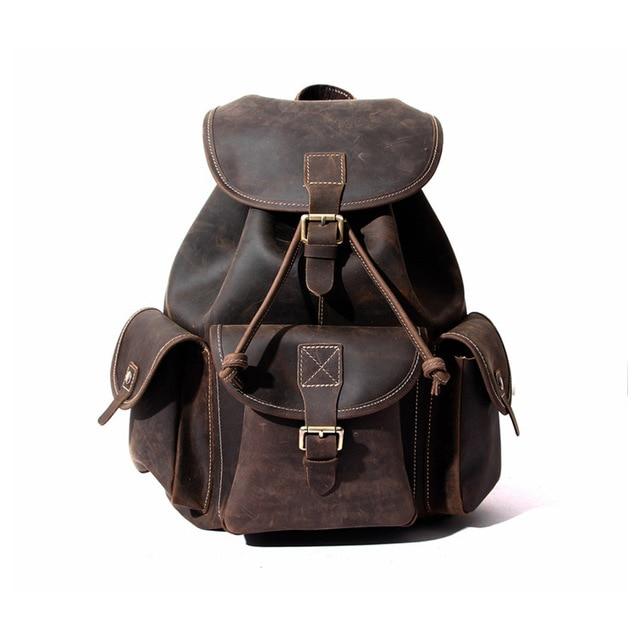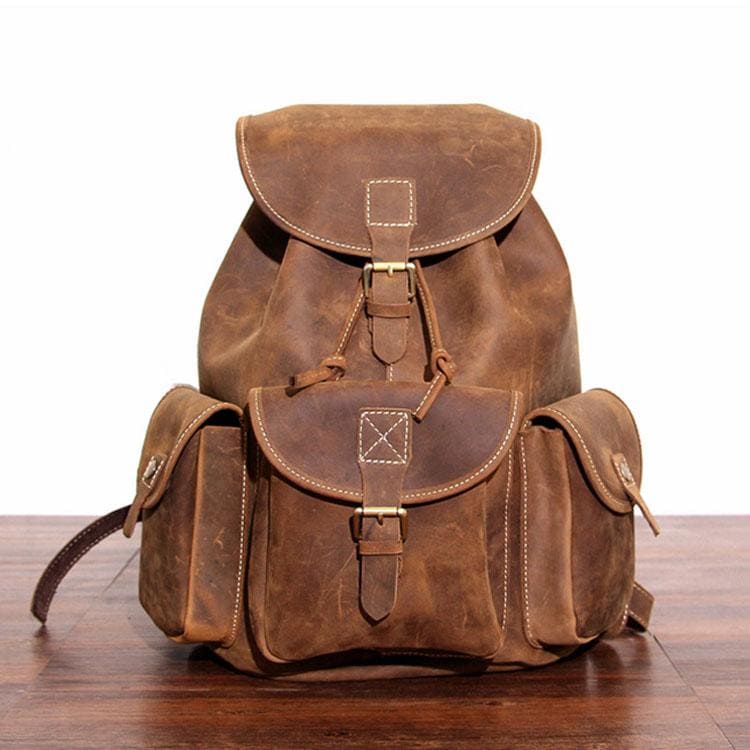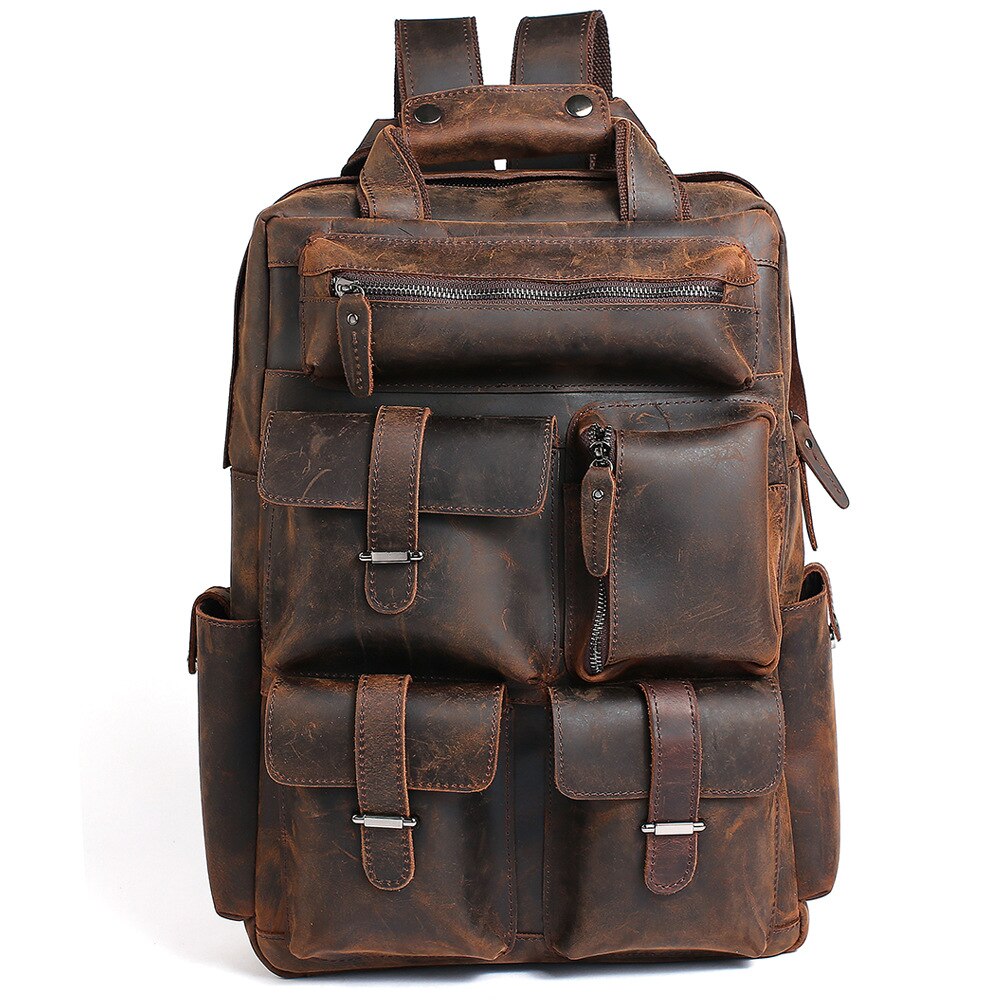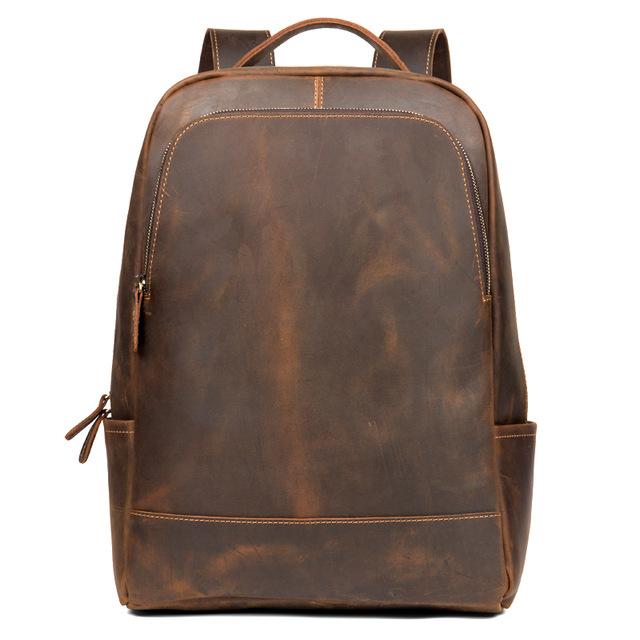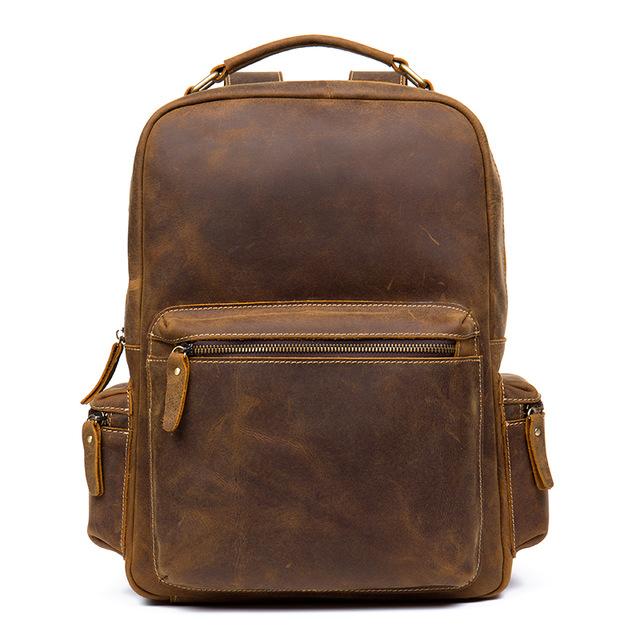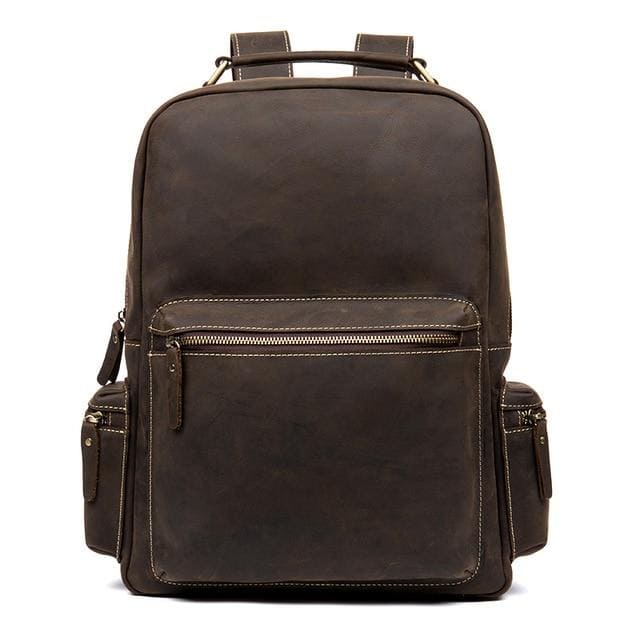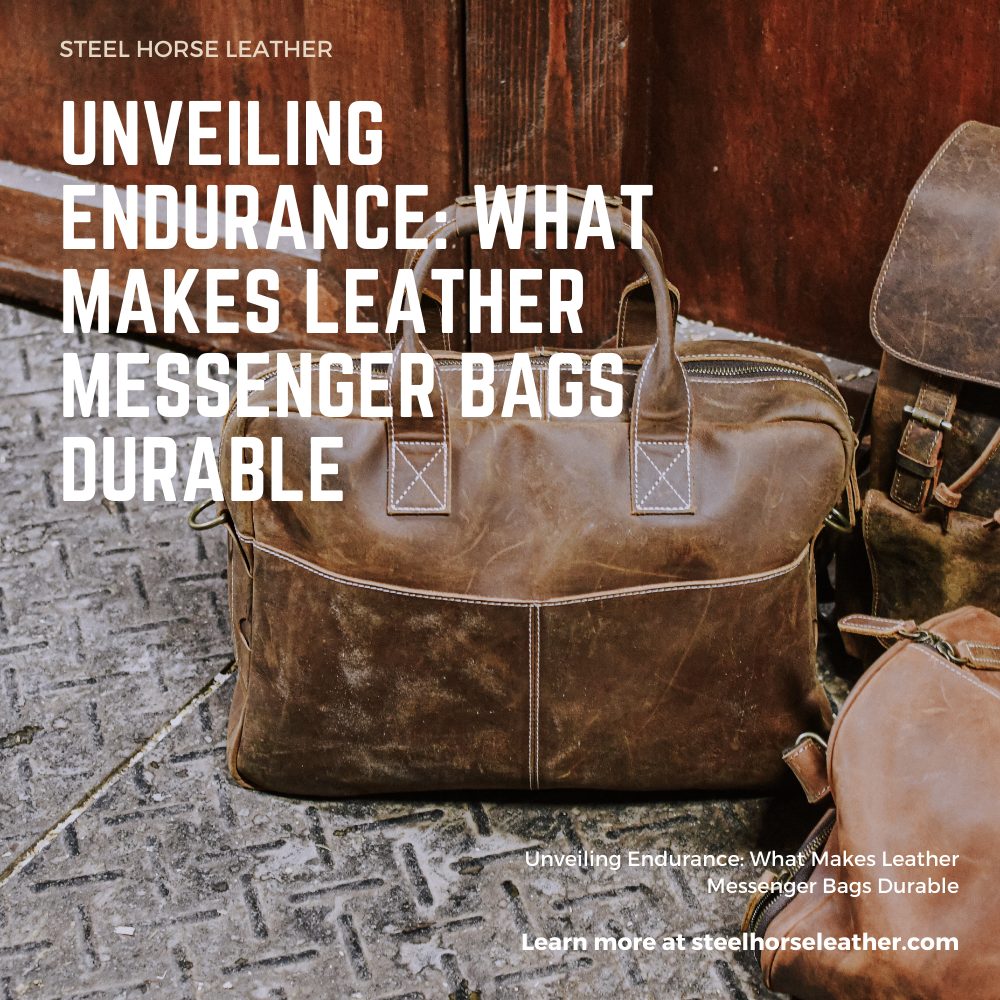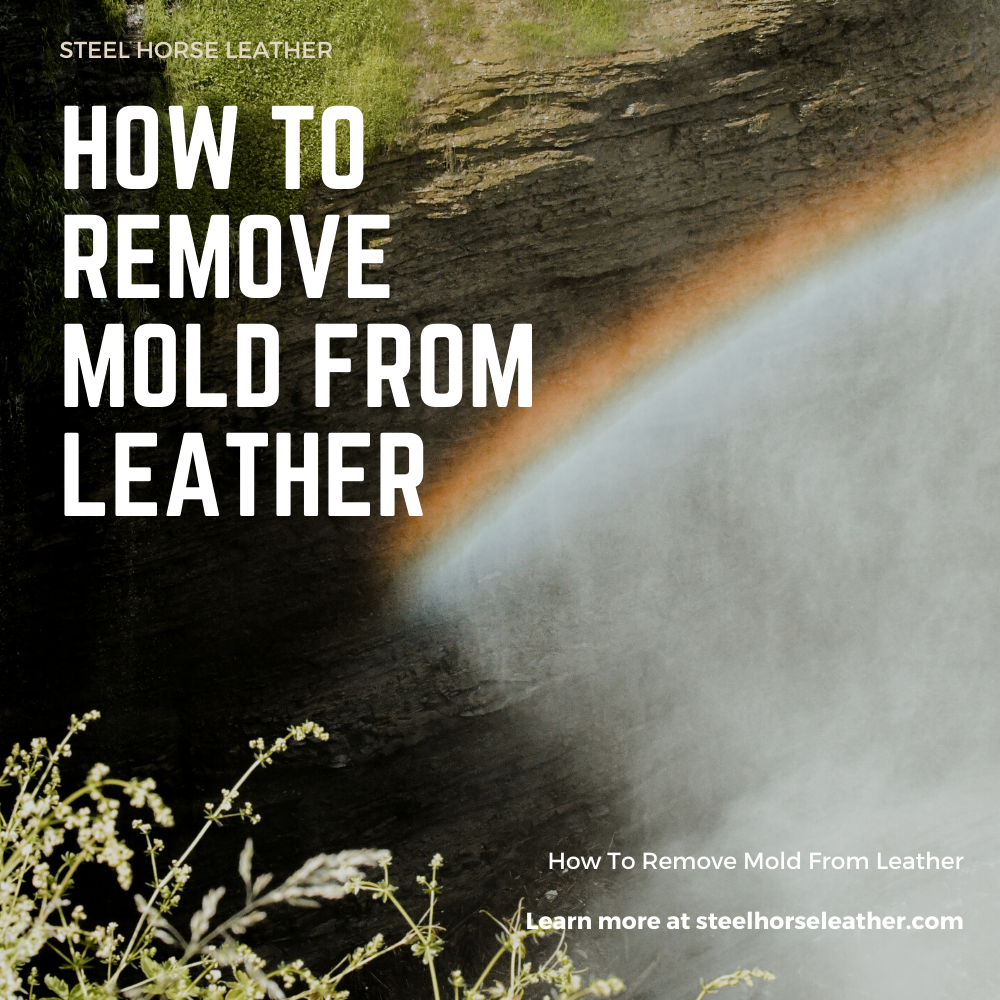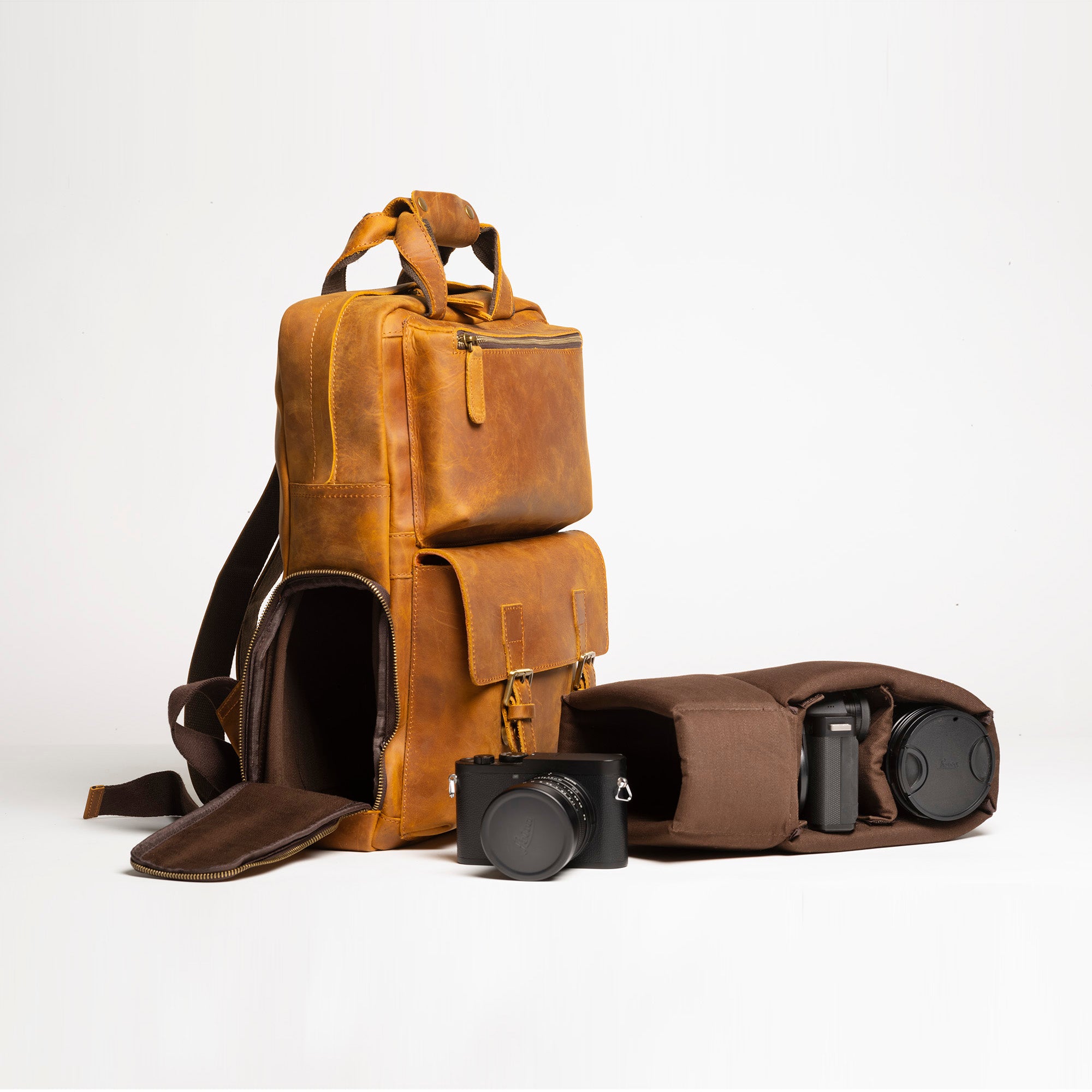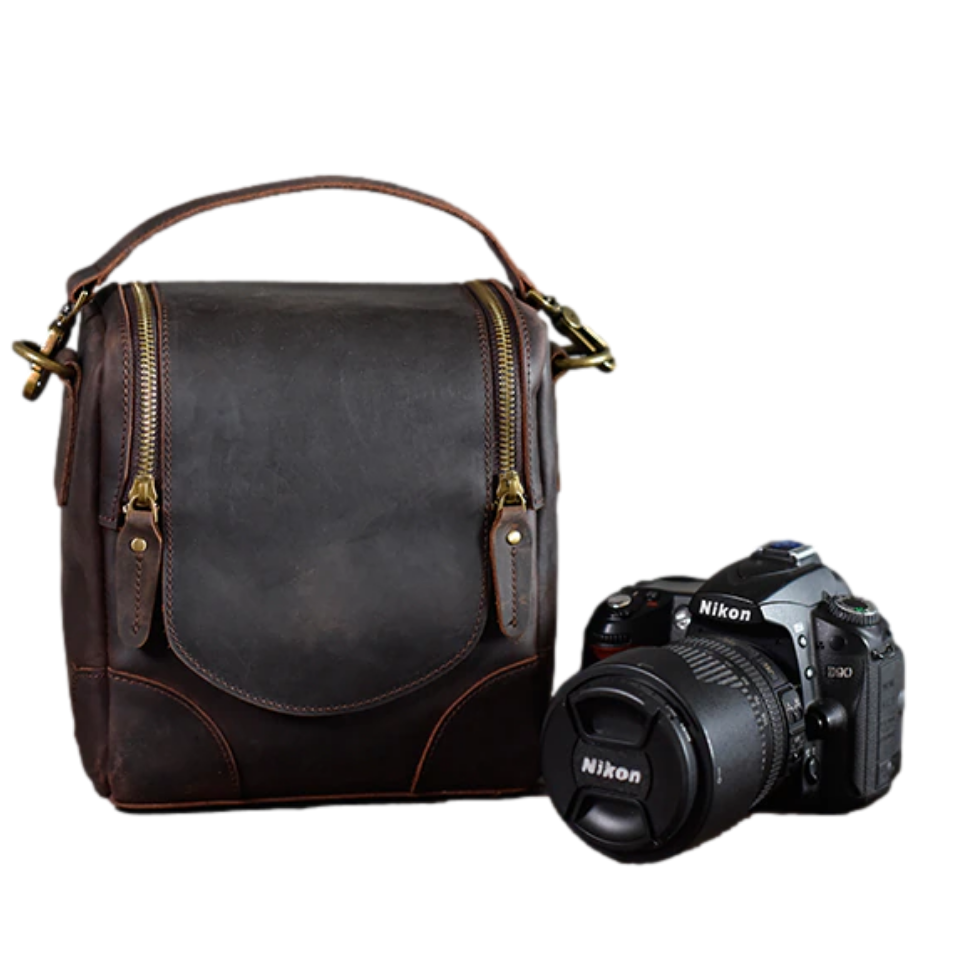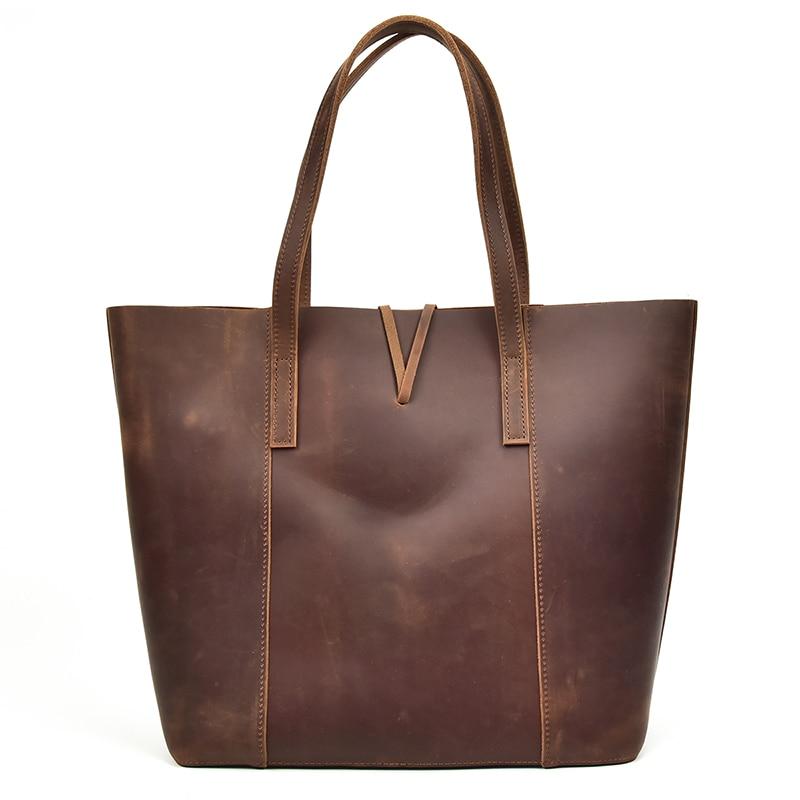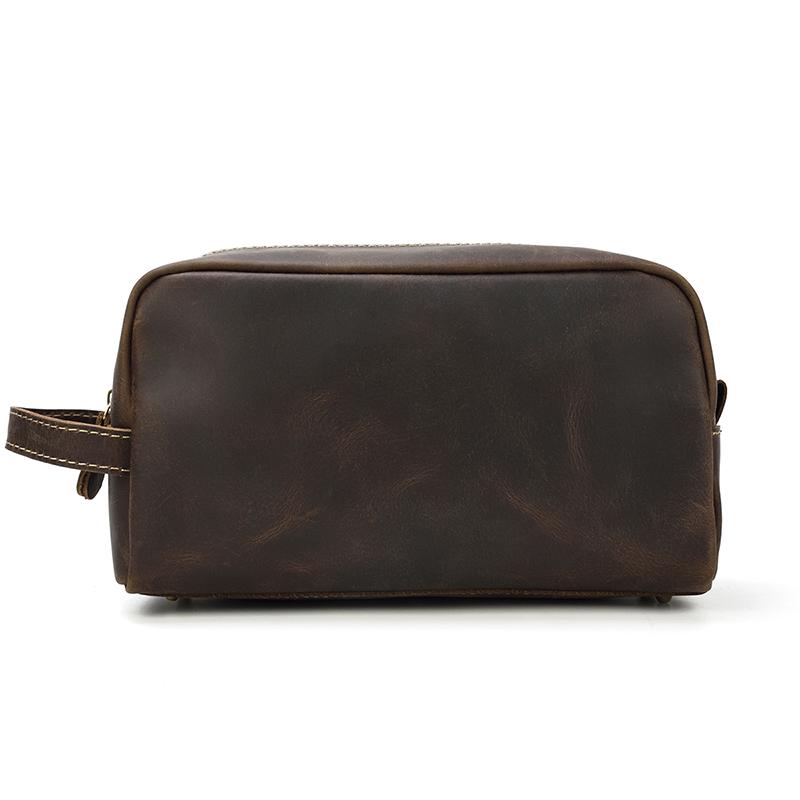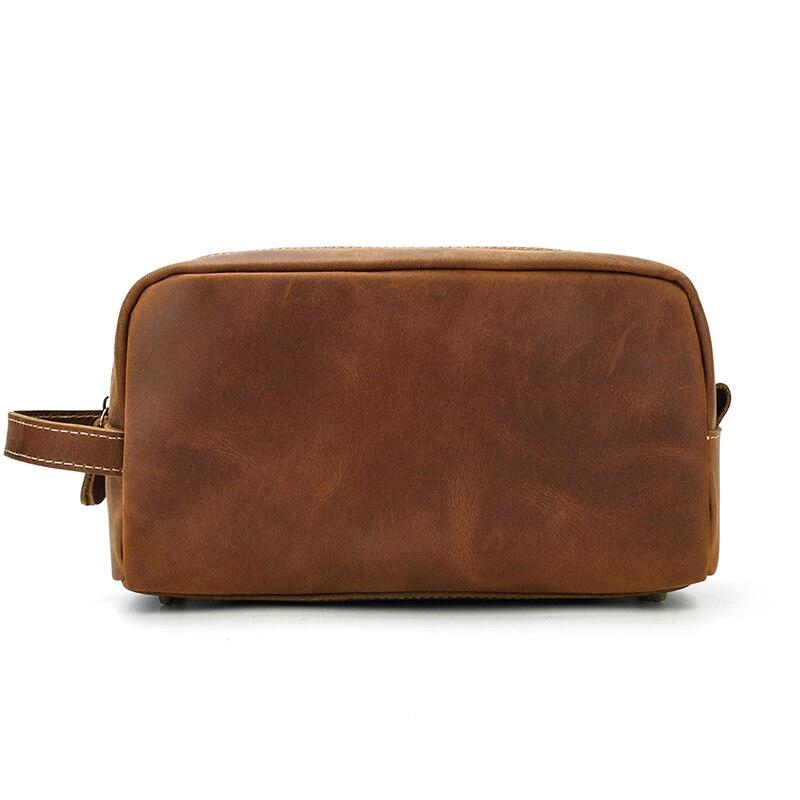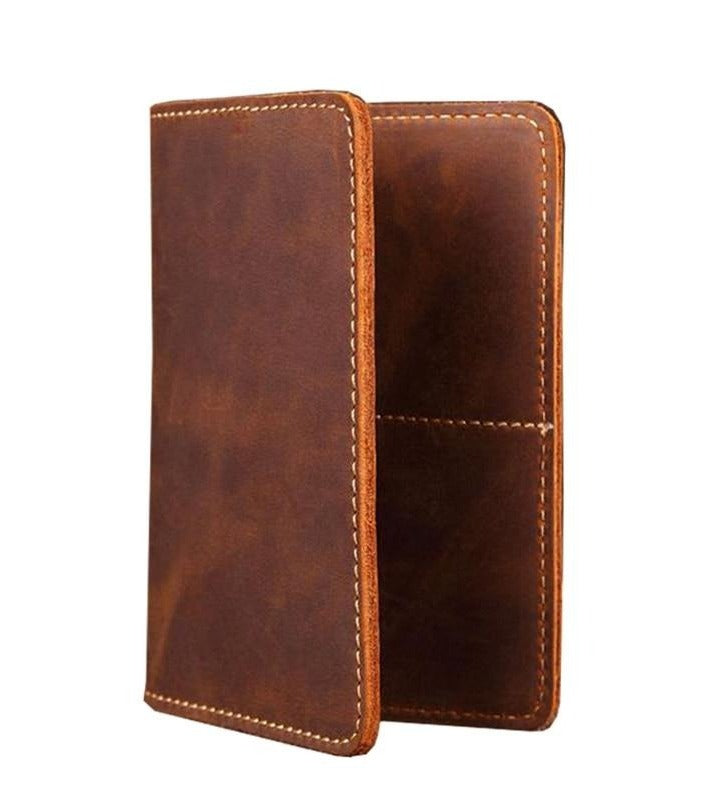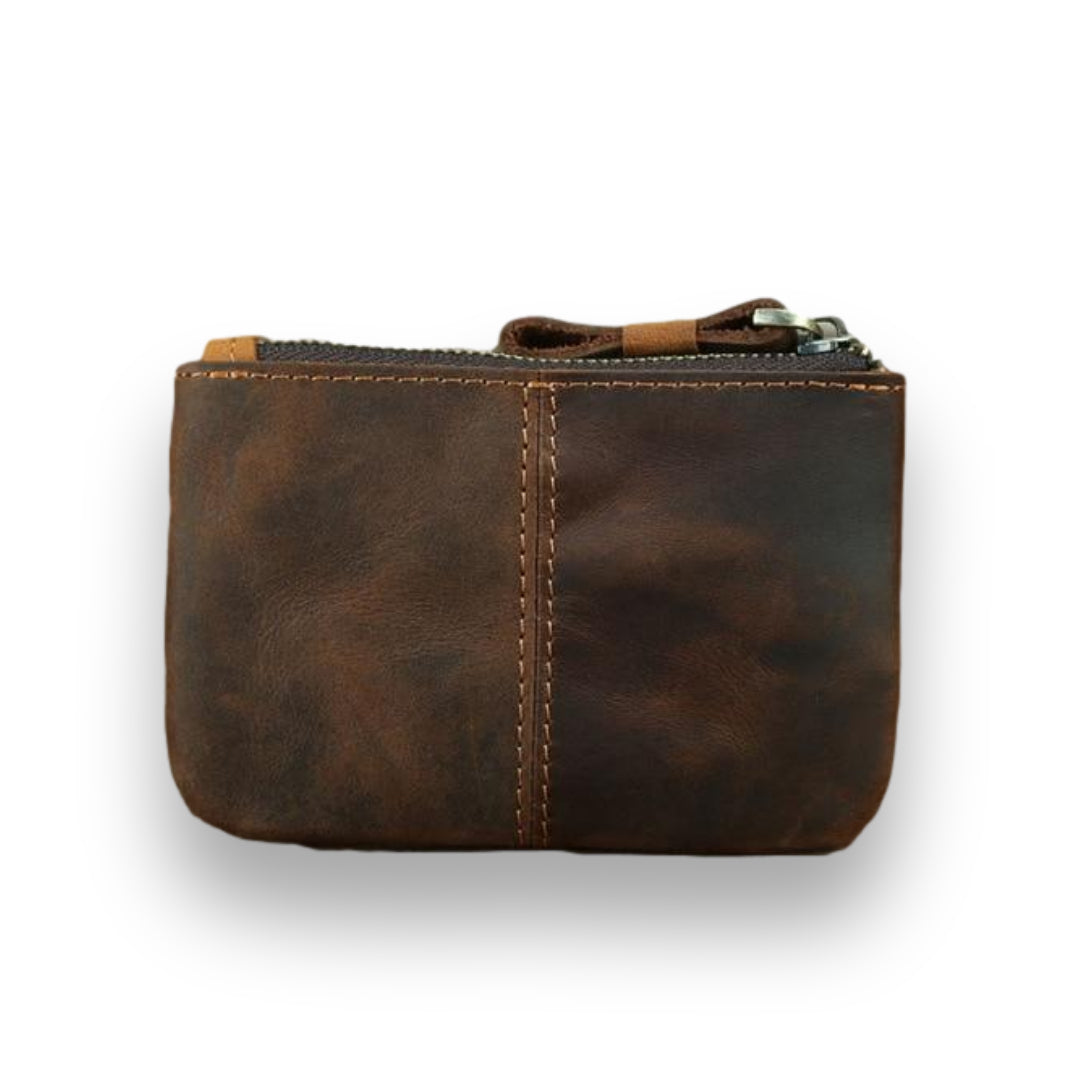Vegetable tan leather is a type of leather that is made using vegetable-based tanning agents, as opposed to chemical-based tanning agents. This process results in a more natural and eco-friendly product, as well as a unique and beautiful patina over time. Vegetable tan leather is typically more durable and resistant to water than chrome-tanned leather. It is also often more expensive. The process of vegetable tanning is an ancient technique that is still used today by a small number of artisans and craftsmen. It is considered a traditional method of tanning and the leather produced is considered premium quality leather. If you're looking for a natural-looking leather alternative, vegetable tanning may be the best option for you!
Key Takeaways
-
Vegetable-tanned leather uses natural plant-based tanning agents instead of chemicals, making it more environmentally friendly and sustainable than chrome-tanned alternatives
-
This type of leather develops a unique patina over time, creating a distinctive vintage appearance that enhances its character and value with age
-
While more expensive and limited in color options, vegetable-tanned leather offers superior durability, water resistance, and longevity compared to chemically-tanned leather
-
The traditional tanning process is labor-intensive and time-consuming, which contributes to the higher cost but results in premium quality leather products
-
Vegetable-tanned leather is ideal for high-quality accessories like bags, belts, wallets, and shoes, particularly for consumers who prioritize natural materials and craftsmanship
Why Trust Our Vegetable-Tanned Leather Insights?
At Steel Horse Leather, our expertise in vegetable-tanned leather comes from years of hands-on experience working with master artisans who have dedicated their lives to perfecting traditional leather crafting methods. We don't just write about vegetable tanning – we live and breathe it every day in our workshop. Our craftsmen have spent decades mastering the ancient techniques that transform raw hides into the premium vegetable-tanned leather that goes into every bag we create. This deep, practical knowledge allows us to understand not just the theory behind vegetable tanning, but the real-world nuances that only come from working with this exceptional material daily.
We've also invested considerable time and resources into thoroughly vetting leather suppliers and understanding the complete vegetable tanning process from start to finish. Our holistic approach to mapping leather origins means we've worked directly with tanneries, examined their processes firsthand, and built relationships with providers who share our commitment to traditional, environmentally-conscious methods. This extensive network and hands-on experience with various vegetable-tanned leathers gives us unique insights into quality differences, processing variations, and the characteristics that make some vegetable-tanned leather exceptional while others fall short.
When we share information about vegetable-tanned leather, we're drawing from this wealth of practical experience to help you make informed decisions. Whether you're considering a vegetable-tanned leather product or simply want to understand this fascinating material better, our expertise ensures you're getting accurate, tested knowledge from craftspeople who work with this leather every single day.
What Is Vegetable-Tanned Leather?

If you're looking for a unique and stylish way to add a touch of high-end material to your accessories comparable to the ones from Italy, look no further than vegetable-tanned leather. Made from the skin of fruit or vegetable crops that have been treated with a solution of salt, lime, and water in the tanneries this variety of leather is famous for products that need to be tough but still look good. It's also used for items that are sensitive to chemicals - like jewelry, upholstery, or furniture. As a result, vegetable-tanned leather is a natural choice for products that need to be environmentally friendly, sustainable, and cruelty-free.
A Brief History of Vegetable Tan Leather
Vegetable tan leather was first made in the late 1800s by treating vegetable tannin with a solution of formaldehyde and linseed oil. The process turned out to be quite labor-intensive, so it wasn't very widespread until the 1950s when it began being produced on a larger scale using new techniques.
Vegetable Tanning Methods
Leather goods are definitely in right now, with celebrities like Kendall Jenner and Rihanna opting for them as their go-to fashion accessory. But where does natural vegetable tan leather come in? Well, the answer is vegetable tan leather is a variety of leatherthat is created by tanning the skin of plants and putting it in a liming pit for the hair to come off.
Tanning
The vegetable tanning process is among the tanning methods of applying a natural or artificial tanning agent to leather, hide, paper, or other surfaces in order to make them color. Before tanning, hides are kept in a beam-house, which, deriving from its name, beam-house, is a facility for storage. There are two different kinds of tanning – organic material tanning and inorganic material tanning. Inorganic material tanning uses chemicals to turn the skin cells into polymers, which eventually form leathery substances. Organic material tanning uses natural agents like tree bark or dandelion root, which results in softness and more natural-looking leather.
Treatment
The tanned skins come at this moment, ready for different kinds of processes such as molding, tooling, and carving with vivid and rich colors. Massive drums, which look like steroidal wine barrels, spin in the air while dyeing the hides.
Benefits of Vegetable-Tanned Leather

Looking for a natural leather option that's eco-friendly and has a beautiful patina? Look no further than vegetable tan leather! This type of leather is made from vegetable materials and has a supple feel and a beautiful patina that develops over time as you continue to use leather conditioner. It's often used for shoes, bags, and other accessories because it resists water, oil, and dirt well. Plus, because it's made from natural materials, vegetable tan leather is environmentally friendly too!
Develops a Patina Overtime
Vegetable tan leather will develop a patina over time that will give it a unique, vintage look. This product is made from high-quality hides, and it's designed to last.
Environmentally Friendly
When it comes to finding a way to produce eco-friendly leather goods which produce a good environmental impact, the vegetable tanning process is one of the most sustainable methods out there. Not only is it kinder to the environment, but it also produces durability and longevity in products that are pleasing to the eye. The vegetable tanning process is eco-friendly and doesn't damage the environment in any way as it does not contain any toxic substances.
Extraordinary Earthly Smell
If you're looking for an extraordinary earthly smell that is hard to resist, then vegetable-tanned leather is a perfect choice. Made from the skins of fruits and vegetables that have been treated with a natural tanning agent, this leather has an amazing scent that will entice you. Not only does it boast a delicious aroma, but its unique texture and look also make it ideal for different items such as shoes, bags, wallets etcetera.
Durable
Sturdy vegetable-tanned leather is perfect for high-use pieces of upholstery and furniture. It is resistant to water and dirt, has a natural look and feel, and requires no special preparations or treatments before use.
Produces a Stretchable Leather
Any leather made from the artisanal nature of the tanning process has a high tensile strength, and great flexibility, and develops a nice patina with time.
Disadvantages of Vegetable-Tanned Leather

Leather is a material that has been used for centuries, and it's currently one of the most popular materials for shoes, clothing, and accessories. But what is vegetable-tanned leather, and how does it differ from other kinds of leather? This special process has several disadvantages, including the risk of pollution and environmental damage. Besides this, vegetable-tanned leather may also be heavy and uncomfortable to wear.
The Color Will Not Be as Rich as Regular Tanned Leather
When it comes to tanning this kind of leather, you should know that the color will not be as rich as regular tanned leather. Therefore, make sure you plan your process well in advance if you want to achieve a true vegetable tan leather effect. It may take a longer time than usual to get the desired results - so patience is key!
More Expensive
Leather veg-tan is more expensive than any leather tan. The main reason for the difference in price is that vegetable-tanned leather takes longer to produce, which results in a higher cost per unit.
Limited Variation of Colors
Tanning with vegetable tannins extracted from quebracho wood, chestnut, mimosa, and other barks results in a uniform color, which can be difficult to get from other types of leather. There is no variation in colors - it's either light brown or dark brown.
Products Vegetable-Tanned Leather Is Commonly Used For

If you're ever in the market for a new kind of leather product, look no further than vegetable-tanned leather. This kind of leather is made from plants' skin and fat tissue, making it resistant to hot and cold water, oil, and weather conditions.
Bags
Bags | Vegetable Tan Leather Vegetable tan leather bags make for a really stylish and practical option for carrying your groceries or other items around. Not only are they comfortable to wear, but the natural color of veg-tan leather makes them versatile and easy to combine with any outfit.
Belts
Belts | Vegetable Tan Leather Photographer: L S | Source: Unsplash A vegetable tan leather belt will add a natural look to any outfit. It is made from vegetable-tanned leather and has a comfortable fit. You'll find vegetable-tanned leather products all over the internet, so don't miss out on this unique style choice!
Wallets
Wallets | Vegetable Tan Leather If you're looking for a practical and beautiful leather option for your wallet, look no further than vegetable-tanned leather. It is a very sturdy material that will last you years by just simply using a conditioner.
Shoes
Photographer: Ayrus Hill | Source: Unsplash Shoes are essential for a stylish and comfortable outfit, but what kind of shoes should you buy? Choose shoes that are made from vegetable-tanned leather. This type of leather is a good choice because it has an actual process that results in a strong finish.
Vegetable Leather vs Chrome Tanning
| Feature | Vegetable Tanning | Chrome Tanning |
|---|---|---|
| Tanning Agents | Uses natural ingredients and sunlight. | Uses chromium sulfate as the main agent. |
| Environmental Impact | More environmentally friendly, as it does not involve harmful chemicals. | Less environmentally friendly, as it generates more toxic byproducts. |
| Resulting Leather | Often has a natural, rich color; used for many types of leather products. | Used in products like latigo leather; can be more flexible and softer. |
Vegetable tanning is a process that uses the sun to create a tan (a brown substance). This process is done through tanning beds and tanning lamps, but chrome-tanned leather is also an option, which uses an agent called chromium. Chromium tanning is less environmentally friendly, as it generates more toxic byproducts, which are utilized in latigo leather. However, vegetable tanning is more environmentally friendly as it uses natural ingredients and does not involve harmful chemicals.
FAQs
Why Do People Use Vegetable Tan Leather for Shoes, Bags, and Other Accessories?
People often choose vegetable tan leather for shoes, bags, and other accessories because of its natural texture, longevity, and durability. It is also environmentally friendly as it does not require the use of harsh chemicals or dyes.
Which Kind of Vegetable-Tanned Leather Is Better: Oil-Based or Water-Based?
When it comes to selecting the best type of vegetable-tanned leather, it really depends on your specific needs and preferences. However, oil-based leather is generally more resistant to water damage than water-based leather. Oil-tanned leather also develops a unique patina with age that can make it more attractive for some applications. Water-tanned leather, on the other hand, has a softness characteristic and is more flexible than oil-tanned leather. So, depending on your specific needs, you may prefer one type of vegetable leather over the other.
How Can You Get Vegetable Tan Leather?
To get vegetable tan leather, you'll need to visit specialty stores or order it online. Leather suppliers often have vegetable leather in a range of colors, thicknesses, and finishes. You can also buy pre-cut vegetable tan leather for specific projects like wallets or bags. Alternatively, you can tan your own animal hides with natural ingredients like tree bark or leaves.
Is Vegetable-Tanned Leather Real Leather?
Yes, vegetable leather is real finished leather. This type of leather is often used to make high-quality leather goods, such as bags and wallets.
Conclusion
In this blog, we've taken a look at what vegetable tan leather is, the history of this product, as well as some of its benefits and drawbacks. We hope that this information has helped you to make an informed decision about whether or not vegetable leather is the right option for you. If you have any questions or comments, please feel free to leave them below!
























